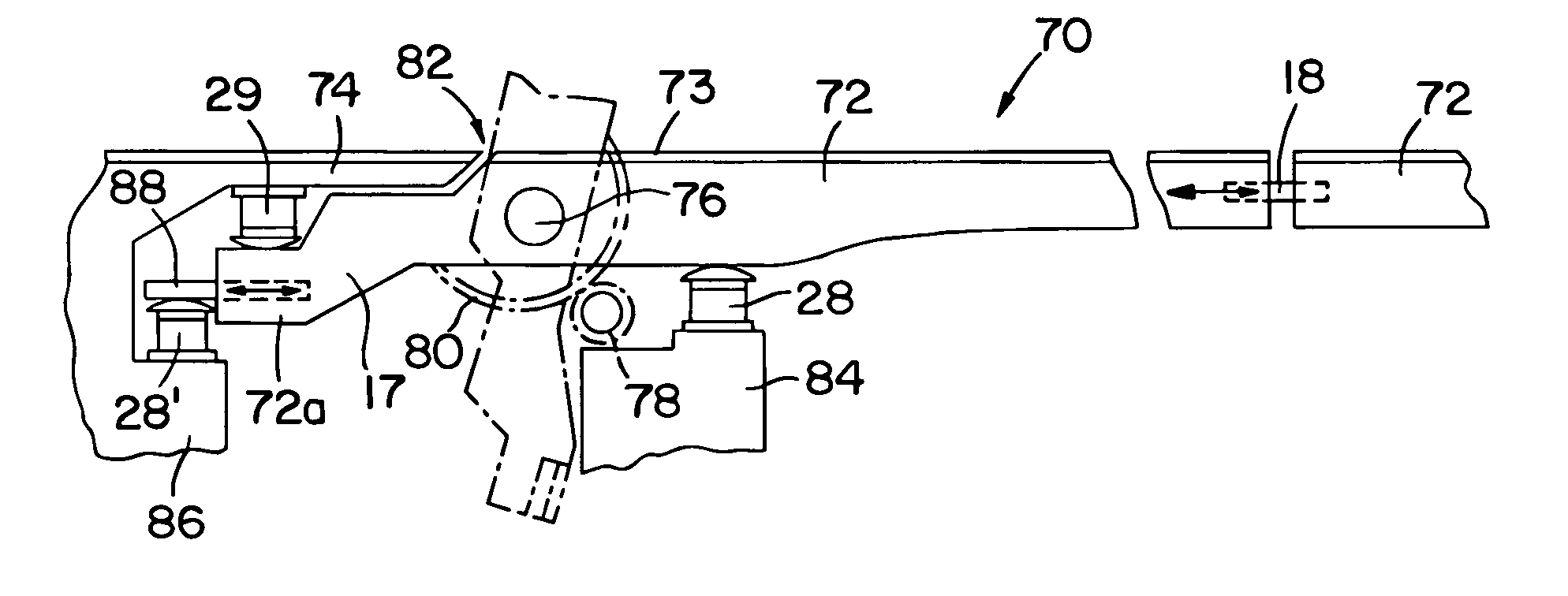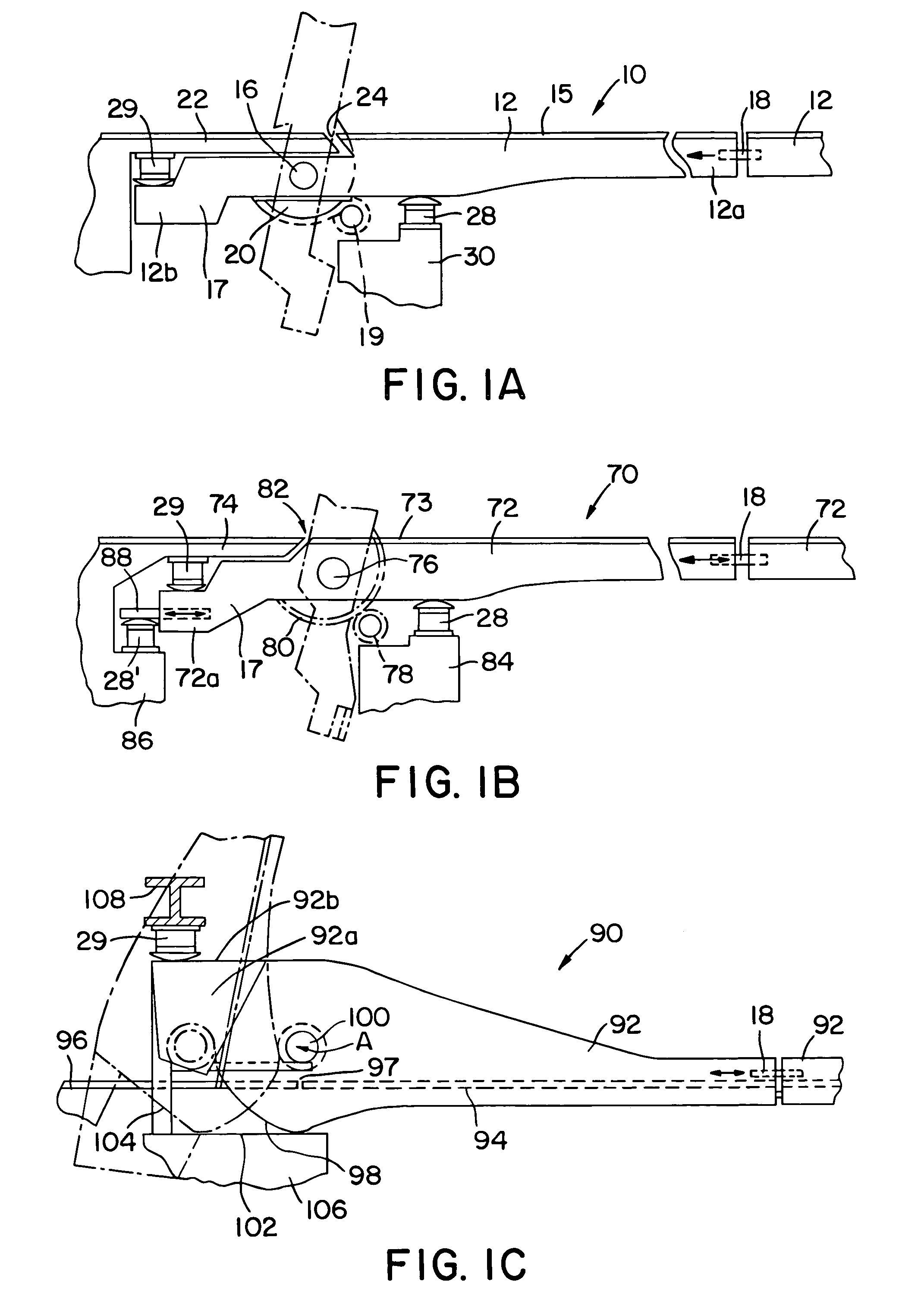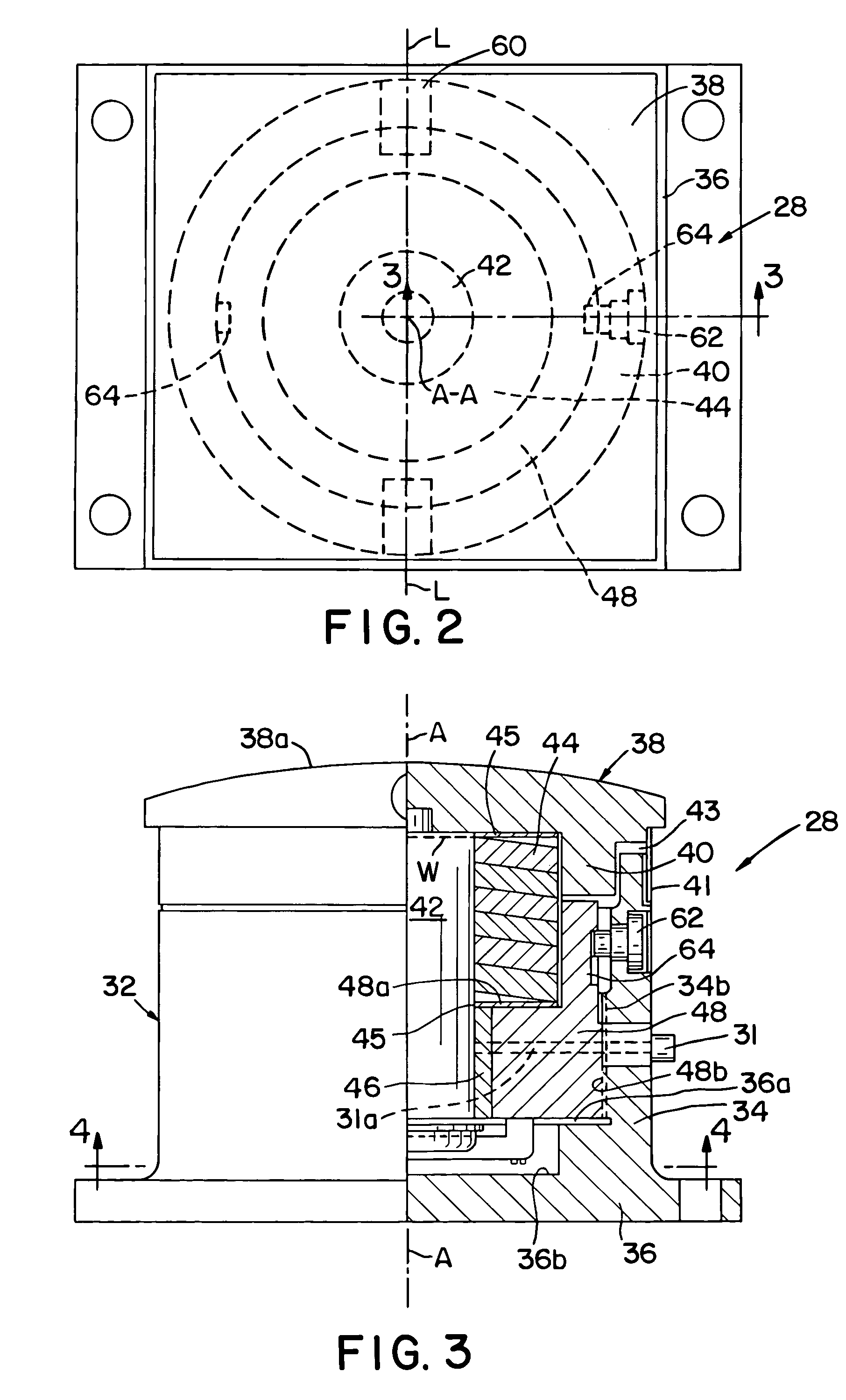Static stabilizers for bridges
a technology of stabilizers and bridges, applied in the field of bridges, can solve the problems of affecting the service life of anchorages, the abnormal wear of live load shoes, the movable leaf structure, and the pier and supporting structures, etc., and achieves the effect of ensuring positive stability and integrity of the leaf, reducing the interruption of bridge service, and facilitating correct clearance adjustmen
- Summary
- Abstract
- Description
- Claims
- Application Information
AI Technical Summary
Benefits of technology
Problems solved by technology
Method used
Image
Examples
Embodiment Construction
[0019]Referring now to the drawings, wherein like reference numerals and characters denote like or corresponding parts throughout the several views, FIG. 1A illustrates one embodiment of the invention incorporated in a trunnion bascule bridge 10 having a pair of opposed complementary span sections or leafs 10a and 10b. Each leaf, such as the leaf 10a, pivots about a trunnion 16 supported in a bearing (not shown) mounted on a fixed pier (not shown). The leafs 10a and 10b are similar in construction and include at least two girders 12 extending the full length of the movable span. Each girder has a forward leaf span portion 12a and a reward leaf tail portion 12b. A road bed surface 15 for vehicular traffic is supported by the leaf girders 12 on its forward span extension over a waterway below the bridge. A counterweight 17 is attached to rearward leaf tail portions 12b of girders 12 so that the movable leaf 10a is essentially balanced about a horizontal pivot axis extending through th...
PUM
 Login to View More
Login to View More Abstract
Description
Claims
Application Information
 Login to View More
Login to View More - R&D
- Intellectual Property
- Life Sciences
- Materials
- Tech Scout
- Unparalleled Data Quality
- Higher Quality Content
- 60% Fewer Hallucinations
Browse by: Latest US Patents, China's latest patents, Technical Efficacy Thesaurus, Application Domain, Technology Topic, Popular Technical Reports.
© 2025 PatSnap. All rights reserved.Legal|Privacy policy|Modern Slavery Act Transparency Statement|Sitemap|About US| Contact US: help@patsnap.com



